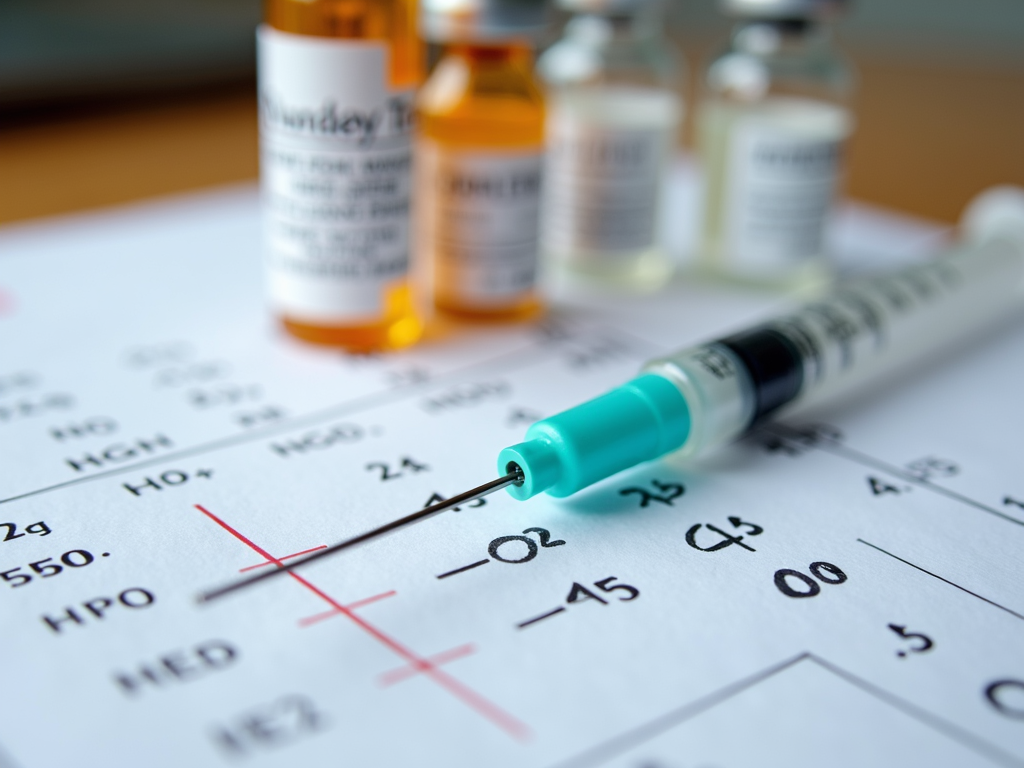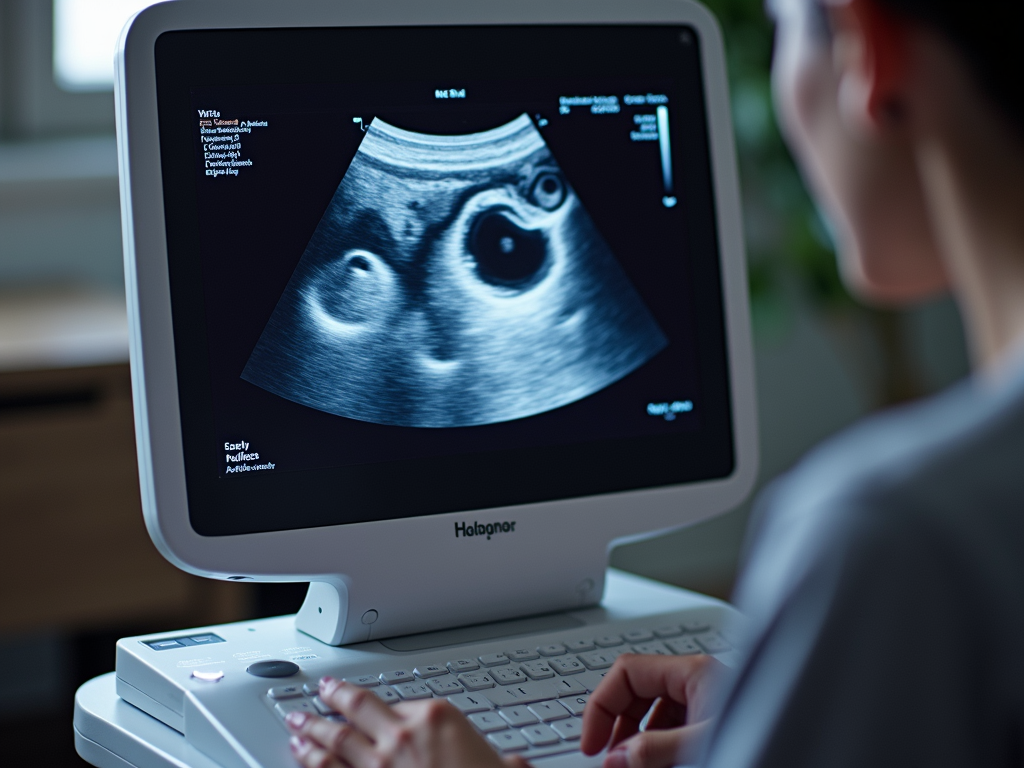Best Practices for Ovarian Stimulation: A Comprehensive Guide
May 5, 2025, 5:24 p.m.
Overview
Ovarian stimulation is a crucial step in fertility treatments like in vitro fertilization (IVF). It involves using medications to encourage the ovaries to produce multiple eggs, increasing the chances of successful fertilization and pregnancy. This guide explores the best practices for ovarian stimulation, providing valuable insights for anyone navigating fertility treatment.

Preparing for Ovarian Stimulation
Before starting ovarian stimulation, there are several steps patients can take to prepare:
- Lifestyle Adjustments: Maintaining a healthy diet, staying hydrated, and getting adequate rest can support the body's response to treatment.
- Medication Management: Learn how to properly store and handle medications. Many fertility drugs need to be refrigerated.
- Injection Training: Most clinics provide training on how to administer injections. Practice with a nurse or watch instructional videos to feel more confident.
- Emotional Support: Consider joining a support group or seeking counseling to manage the emotional aspects of treatment.
Taking these steps can help patients feel more prepared and in control.
Understanding Ovarian Stimulation
In natural ovulation, the body typically releases one egg per menstrual cycle. However, in fertility treatments, the goal is to retrieve multiple eggs to maximize the chances of success. Ovarian stimulation uses hormonal medications to stimulate the ovaries to develop multiple follicles, each containing an egg.
There are several types of medications used in ovarian stimulation:
- Gonadotropins: These are injectable hormones that directly stimulate the ovaries to produce multiple follicles. Common examples include follicle-stimulating hormone (FSH) and luteinizing hormone (LH).
- GnRH Agonists: These medications prevent premature ovulation by suppressing the body's natural hormone production. They are often used in combination with gonadotropins.
- GnRH Antagonists: Similar to agonists, these prevent premature ovulation but act more quickly and are typically used in shorter protocols.
The choice of medication and protocol depends on individual factors such as age, ovarian reserve, and previous treatment history.

Ovarian Stimulation Protocols
There are several protocols used in ovarian stimulation, each with its own advantages:
- Long Protocol: Involves starting GnRH agonists in the luteal phase of the previous cycle to suppress natural hormone production, followed by gonadotropin stimulation. This protocol allows for better control but takes longer.
- Short Protocol: Uses GnRH agonists and gonadotropins starting early in the menstrual cycle. It's quicker but may result in fewer eggs.
- Antagonist Protocol: Involves starting gonadotropins on day 2-3 of the cycle, with GnRH antagonists added later to prevent premature ovulation. This protocol is popular due to its shorter duration and lower risk of OHSS.
The choice of protocol depends on individual patient characteristics and the fertility specialist's recommendation.
Monitoring Ovarian Stimulation
Close monitoring is essential during ovarian stimulation to ensure the treatment is effective and safe. Monitoring typically involves:
- Ultrasound Scans: These are used to visualize the development of follicles in the ovaries. The number and size of follicles help determine when the eggs are mature and ready for retrieval.
- Blood Tests: Hormone levels, particularly estradiol, are measured to assess the ovarian response and adjust medication doses if necessary.
Regular monitoring helps prevent complications such as ovarian hyperstimulation syndrome (OHSS), a condition where the ovaries become swollen and painful due to excessive stimulation.

What to Expect During Monitoring Appointments
Monitoring appointments are typically scheduled every few days during stimulation. Here's what to expect:
- Ultrasound: A transvaginal ultrasound is performed to measure the size and number of follicles. Follicles are considered mature when they reach 18-20mm in diameter.
- Blood Tests: Blood is drawn to measure hormone levels, particularly estradiol, which rises as follicles grow. High estradiol levels can indicate a risk of OHSS.
Based on these results, the fertility specialist may adjust medication doses or schedule the trigger shot.
Patients should plan for multiple appointments and be prepared for early morning visits, as many clinics schedule monitoring before regular office hours.
Best Practices for Safe and Effective Stimulation
To optimize ovarian stimulation, several best practices should be followed:
- Individualized Treatment Plans: Each patient's protocol should be tailored to their specific needs, considering factors like age, ovarian reserve, and previous responses to stimulation.
- Careful Dosing: Starting with the lowest effective dose of gonadotropins can help minimize the risk of OHSS while still achieving an adequate response.
- Frequent Monitoring: Regular ultrasound and blood tests allow for timely adjustments to medication doses and help prevent complications.
- Use of GnRH Antagonists: These can be used to prevent premature ovulation and are associated with a lower risk of OHSS compared to agonists.
- Trigger Shot Timing: The timing of the trigger shot, which induces final egg maturation, is critical. It should be administered when the majority of follicles are at the optimal size.
- Luteal Phase Support: After egg retrieval, hormonal support is often needed to prepare the uterine lining for embryo implantation.
By following these best practices, fertility specialists can maximize the chances of a successful outcome while minimizing risks.

Additional Best Practices
- Hydration: Drinking plenty of water can help manage side effects and reduce the risk of OHSS.
- Rest: While light exercise is usually fine, avoid strenuous activities that could impact the ovaries.
- Nutrition: Eating a balanced diet rich in protein and antioxidants can support egg quality.
- Stress Management: Techniques like meditation, yoga, or acupuncture can help manage stress during treatment.
Incorporating these practices can enhance the overall experience and potentially improve outcomes.
Managing Risks and Side Effects
While ovarian stimulation is generally safe, it does carry some risks. The most significant is OHSS, which can range from mild to severe. Symptoms include abdominal pain, bloating, and in severe cases, shortness of breath and blood clots.
To manage these risks:
- Identify High-Risk Patients: Women with polycystic ovary syndrome (PCOS) or a history of OHSS are at higher risk and may require modified protocols.
- Use of GnRH Agonist Trigger: In some cases, using a GnRH agonist instead of hCG for the trigger shot can reduce the risk of OHSS.
- Freeze-All Strategy: If there is a high risk of OHSS, embryos can be frozen and transferred in a later cycle when the ovaries have recovered.
Patients should be educated about the signs and symptoms of OHSS and advised to contact their clinic if they experience any concerning symptoms.

Recognizing and Responding to OHSS
It's important for patients to recognize the symptoms of OHSS:
- Mild to moderate: Bloating, mild abdominal pain, weight gain of 5-10 pounds
- Severe: Severe abdominal pain, rapid weight gain, shortness of breath, decreased urination
If severe symptoms occur, contact the fertility clinic immediately. Treatment may include rest, hydration, and in some cases, hospitalization.
Prevention is key, and following the best practices mentioned earlier can help minimize the risk.
Personal Insights and Experiences
Navigating ovarian stimulation can be emotionally and physically challenging. Many patients report feeling anxious about the process, from daily injections to frequent clinic visits. However, hearing from others who have been through it can provide reassurance.
One patient shared, "The injections were intimidating at first, but I got used to them quickly. The clinic staff were incredibly supportive, and I felt well cared for throughout the process."
Fertility specialists also emphasize the importance of communication. "We encourage patients to ask questions and voice any concerns," says Dr. Jane Smith, a renowned fertility expert. "Understanding the process can help alleviate anxiety and make the journey smoother."

Expert Tips for a Smoother Journey
Fertility specialists offer the following tips:
- Stay Organized: Keep a calendar of appointments and medication schedules.
- Communicate Openly: Don't hesitate to ask questions or express concerns to your care team.
- Seek Support: Lean on friends, family, or support groups for emotional support.
- Be Patient: Fertility treatment can be a rollercoaster. Try to stay positive and take it one step at a time.
By following these tips, patients can navigate ovarian stimulation with greater confidence and resilience.
Frequently Asked Questions
Here are some common questions about ovarian stimulation:
-
How long does ovarian stimulation take? Typically, stimulation lasts 8-12 days, but it can vary based on individual response.
-
Are the injections painful? Most patients find the injections manageable. Using ice to numb the area and proper technique can minimize discomfort.
-
Can I continue working during stimulation? Yes, most women can continue their normal activities, but it's important to listen to your body and rest if needed.
-
What if I don't respond well to the medications? If the response is poor, the cycle may be canceled, and the protocol adjusted for future attempts.
Addressing these questions can provide additional value to readers.

Choosing the Right Fertility Clinic
Selecting a reputable fertility clinic is crucial for successful ovarian stimulation. Look for clinics with:
- Experienced specialists
- High success rates
- Comprehensive monitoring capabilities
- Supportive staff
- Clear communication
Researching and visiting multiple clinics can help you find the best fit for your needs.
Conclusion
Ovarian stimulation is a critical component of fertility treatment, and following best practices can significantly improve outcomes. By understanding the medications, monitoring processes, and risk management strategies, patients can feel more empowered and informed throughout their journey.
For those embarking on this path, remember that you are not alone. Many have successfully navigated ovarian stimulation and gone on to build their families. With the right support and care, you can too.